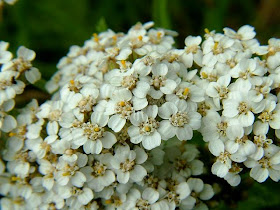Over time the hyacinth flower – which is a genus of roughly 30 bulbous plants – is a member of the hyacinthaceae family, though it was once considered a part of the liliaceae clan. The bulbs of this plant produce a thick, 6 to 12 inch spike. From this spike blossoms reflexed petals and waxy, bell-shaped flowers that come in colours of white, pink, red, purple, blue and various shades of orange. Hyacinths are thought to grow in three distinct categories: single, double or multiflora. Native to areas of the southern Mediterranean, these blossoms are spring-growing, and bloom their best in loose, well drained soil and warm, bright sunlight.
The origin of the hyacinth flower is steeped in mythology. One of the better known stories tell of Apollo – who adored a young man named Hyakinthos – tiring of his usual pastimes and leaving his shrine in Delphi to play games with his earthly companion. On one such occasion, the two began a game of discus throwing. Apollo, forgetting his godly strength, threw the discus high into the heaven, where Hyakinthos attempted to catch it when it came to earth. Unfortunately, it fell and hit Hyakinthos on the head, causing him to topple to the ground, bleeding. As Apollo clung to his dying friend, blood trickled from his head to the dirt below him, and from that blood, a sweet-smelling red flower blossomed. In other forms of this tale, the letters “ay” can be read on the petals of the red hyacinth, which represents the sigh of pain that came from Apollo as he cradled Hyakinthos.
Although the hyacinth flower was very popular during the time of ancient Romans, they fell into deep obscurity until the 16th century, when the German physician Leonhardt Rauwolf began collecting these flowers on a trip to Turkey. Since then, their popularity has both risen and fallen with the times – slowly increasing in value, then becoming a large success in English gardens between the 18th and 19th century.
In general, the hyacinth flower is a symbol of constancy; however, these blossoms represent a variety of things, from sportsmanship and a playful nature, to sincerity, forgiveness and well wishes. As a gift, these flowers can be given to represent a wish for joy and innocence in the recipient’s life; a genuine apology or a token of mercy. Although these flowers can be given as simple, single cut blooms, many people prefer to give them as large bouquets or potted plants.


.jpg)
.jpg)
.jpg)
.jpg)

.jpg)
.jpg)
.jpg)
.jpg)

.jpg)
.jpg)
.jpg)

.jpg)
.jpg)

.jpg)
.jpg)
.jpg)

.jpg)

.jpg)
.jpg)
.jpg)

.jpg)
.jpg)
.jpg)
.jpg)

.jpg)
.jpg)
.jpg)
.jpg)
.jpg)

.jpg)
.jpg)
.jpg)

.jpg)
.jpg)
.jpg)
.jpg)

.jpg)
.jpg)
.jpg)
.jpg)